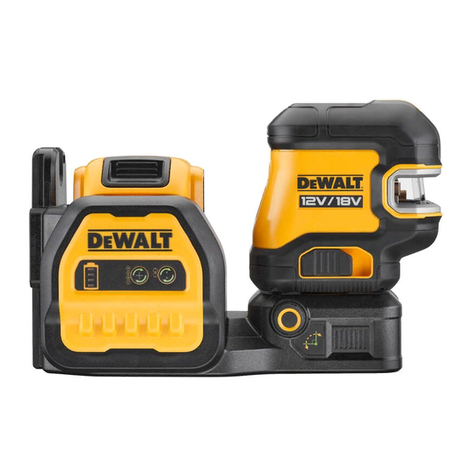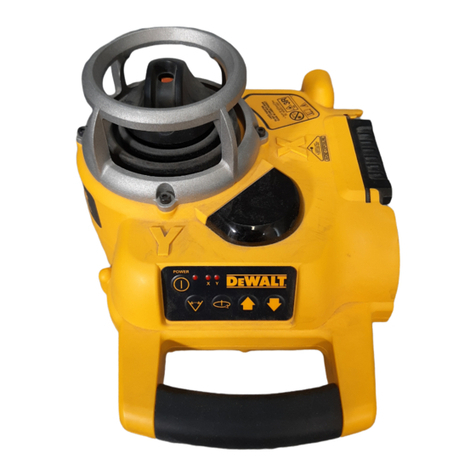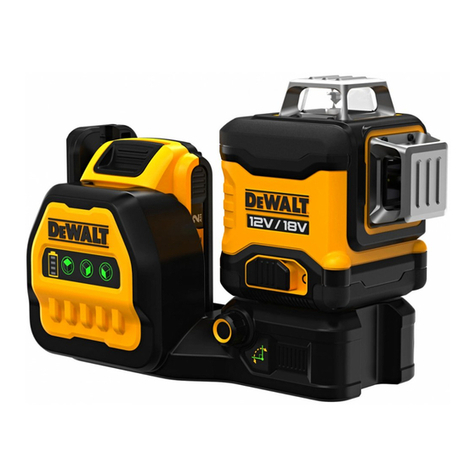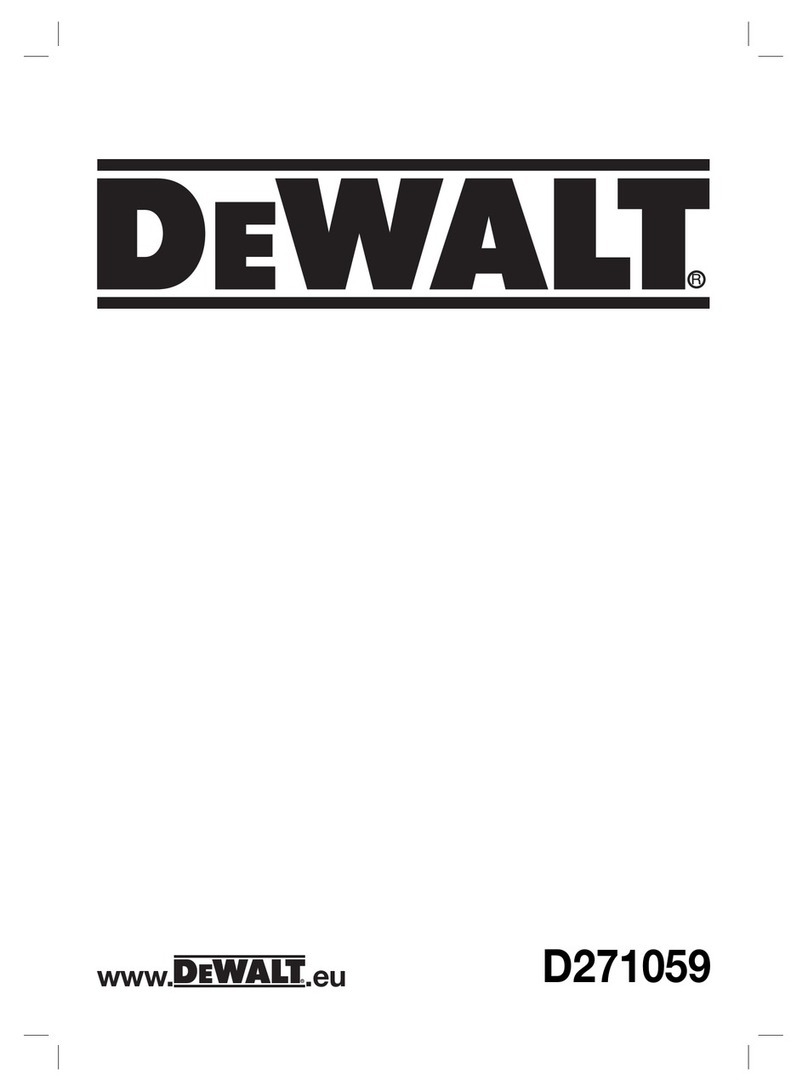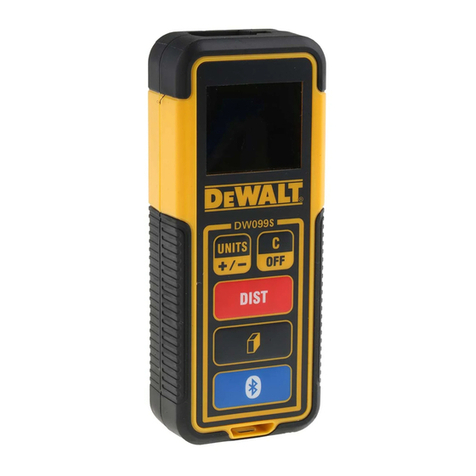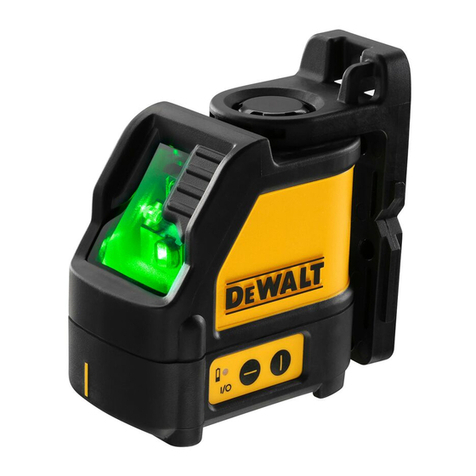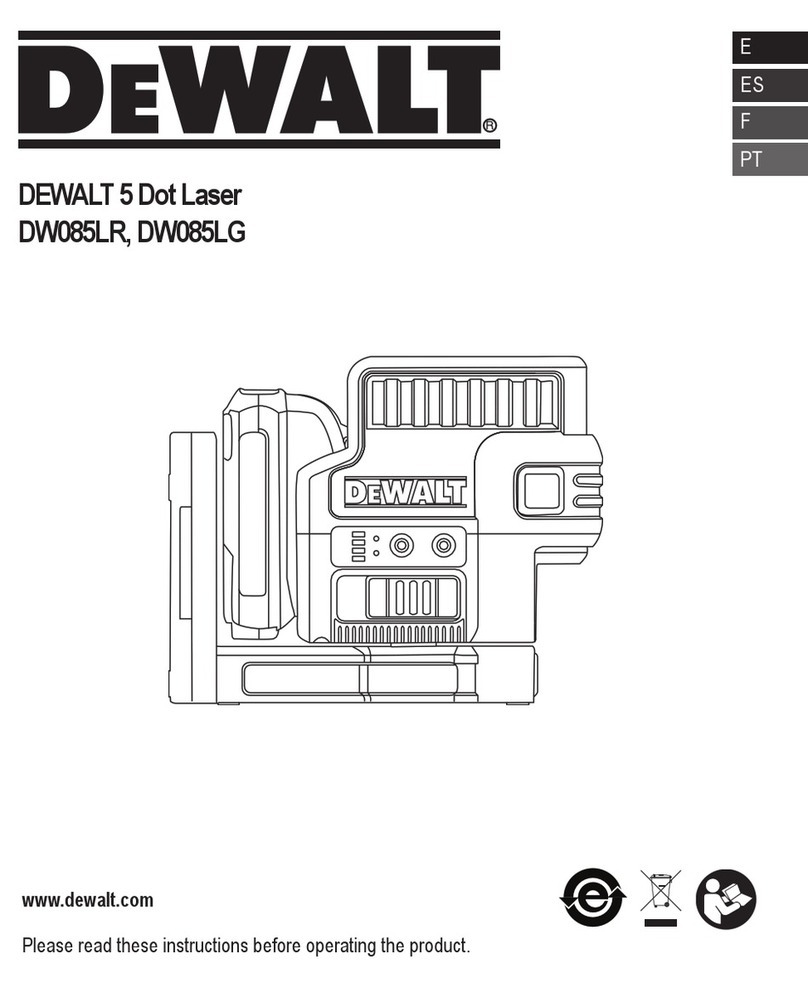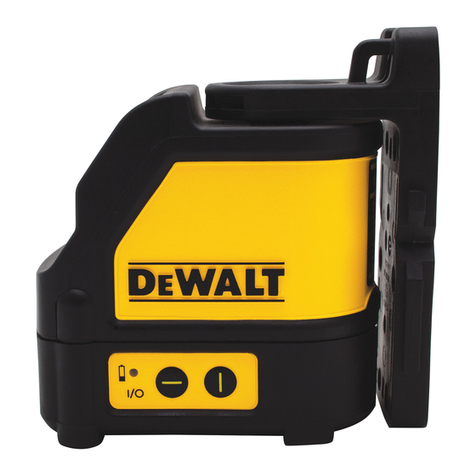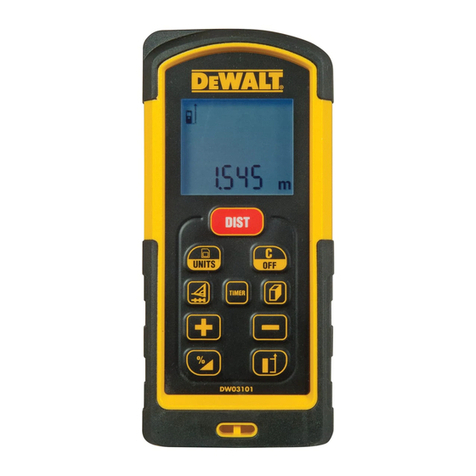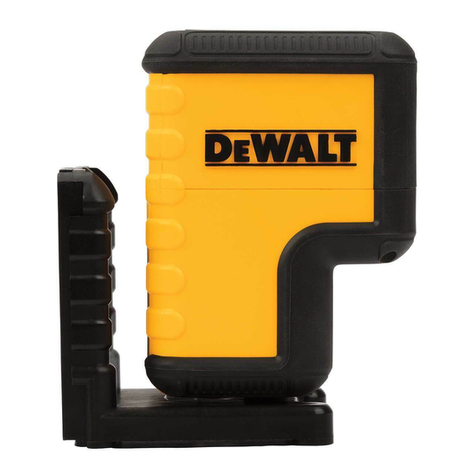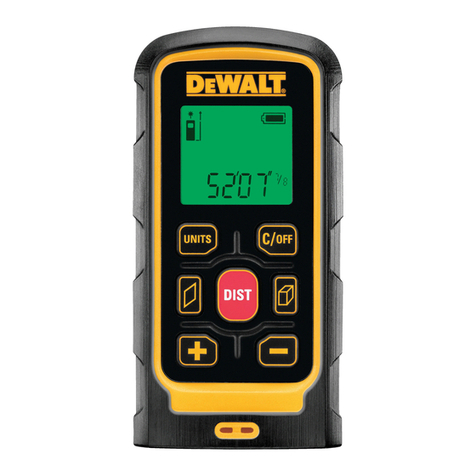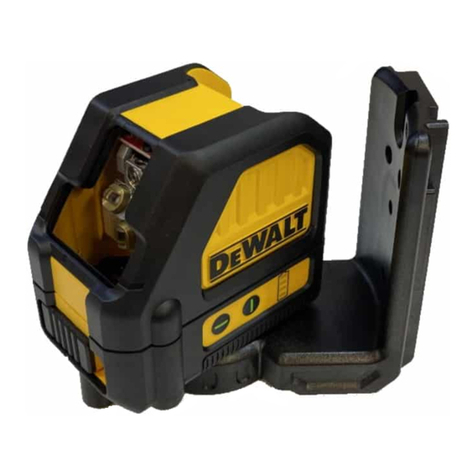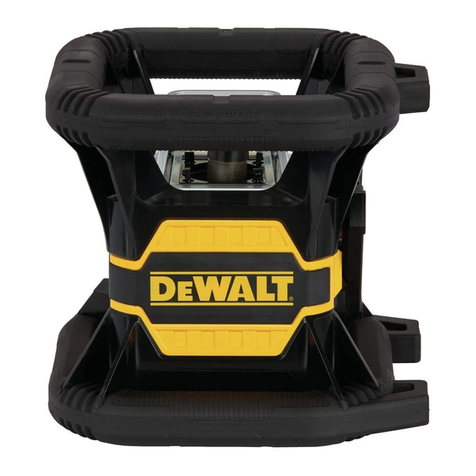3
English
DANGER: Never attempt to open the battery pack for any reason.
If battery pack case is cracked or damaged, do not insert into
charger. Danger of electric shock or electrocution. Damaged battery
packs should be returned to service center for recycling.
NOTE: Battery storage and carrying caps are provided for
use whenever the battery is out of the tool or charger.
Remove cap before placing battery in charger or tool.
WARNING: Do not store or carry battery so that
metal objects can contact exposed battery terminals.
For example, do not place battery in aprons, pockets,
tool boxes, product kit boxes, drawers, etc. with loose nails,
screws, keys, etc. without battery cap. Without cap in place,
battery could short circuit causing fire or burns or damage to battery.
Battery Packs
Your tool uses a 9.6, 12.0, 14.4 or an 18 Volt DEWALT battery pack.
When ordering replacement battery packs, be sure to include catalog
number and voltage: Extended Run-Time battery packs deliver 25%
more run-time than standard battery packs. XR+ Extended Run-
Time battery packs deliver 40% more run time than standard battery
packs. NOTE: Your tool will accept either standard or Extended Run
Time battery packs.
The RBRC™ Seal
The RBRC™ (Rechargeable Battery Recycling Corp
oration) Seal on the nickel-cadmium battery (or battery
pack) indicates that the costs to recycle the battery (or
battery pack) at the end of its useful life have already
been paid by DEWALT. In some areas, it is illegal to place
spent nickel-cadmium batteries in the trash or municipal
solid waste stream and the RBRC program provides an environ-
mentally conscious alternative.
RBRC in cooperation with DEWALT and other battery users, has
established programs in the United States to facilitate the collection of
spent nickel-cadmium batteries. Help protect our environment and
conserve natural resources by returning the spent nickel-cadmium
battery to an authorized DEWALT service center or to your local retailer
for recycling. You may also contact your local recycling center for
information on where to drop off the spent battery.
Important Safety Instructions for Battery
Chargers
SAVE THESE INSTRUCTIONS - This manual contains important
safety instructions for DEWALT battery chargers.
•Before using battery charger, read all instructions and cautionary
markings on battery charger, battery and product using battery.
•Do not operate power tools in explosive atmospheres, such as in
the presence of flammable liquids, gases, or dust. Power tools
create sparks which may ignite the dust or fumes.
CAUTION:To reduce the risk of injury, charge only DEWALT nickel
cadmium rechargeable batteries. Other types of batteries may
burst causing personal injury and damage.
CAUTION: Under certain conditions, with the charger plugged in to
the power supply, the exposed charging contacts inside the charger
can be shorted by foreign material. Foreign materials of a
conductive nature such as, but not limited to, steel wool, aluminum
foil, or any buildup of metallic particles should be kept away from
charger cavities. Always unplug the charger from the power supply
when there is no battery pack in the cavity. Unplug charger before
attempting to clean.
DANGER: High voltage present at charging terminals. Do not
probe with conductive objects. Danger of electric shock or
electrocution.
WARNING: Don’t allow any liquid to get inside charger or expose to
rain or snow. Electric shock may result.
•The charger and battery pack are specifically designed to work
together. DO NOT attempt to charge the battery pack with any chargers
other than the ones in this manual.
•These chargers are not intended for any uses other than charging
DEWALT rechargeable batteries. Any other uses may result in risk of
fire, electric shock or electrocution.
•To reduce risk of damage to electric plug and cord, pull by plug rather

